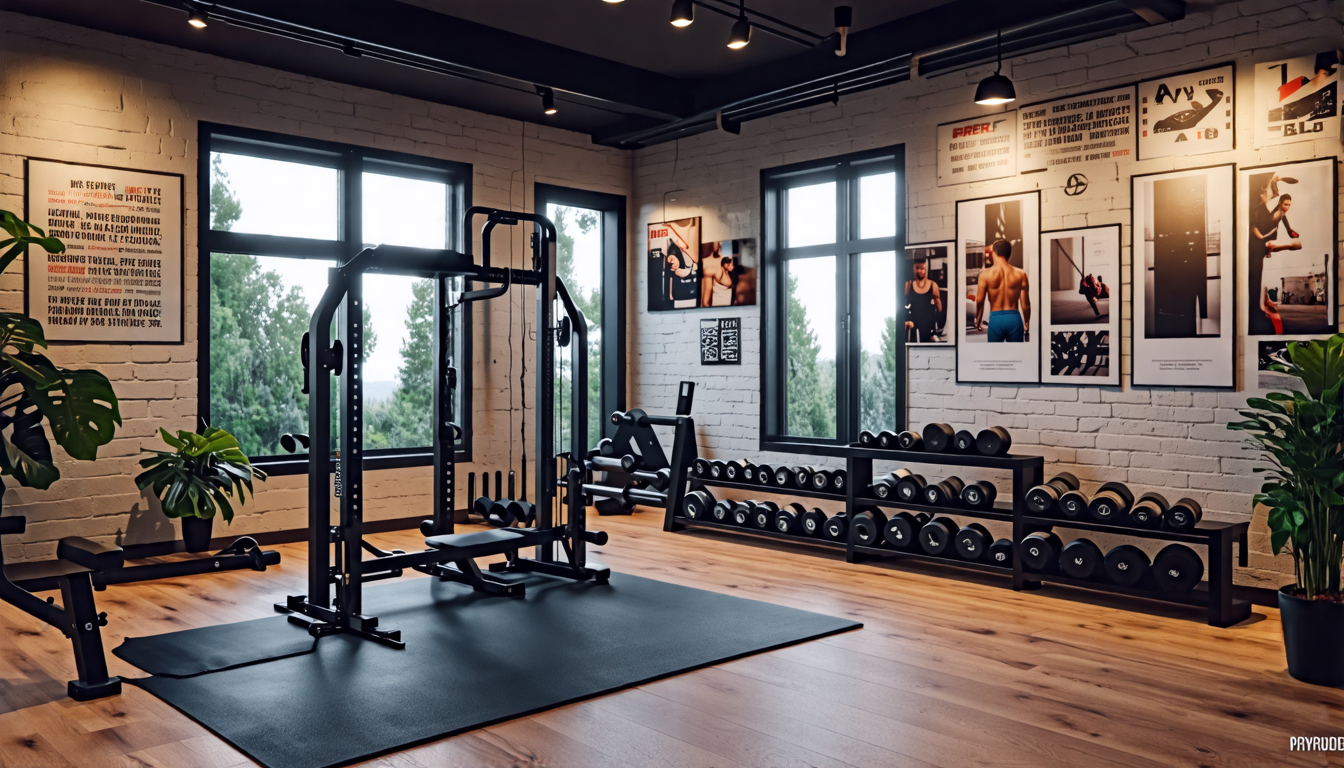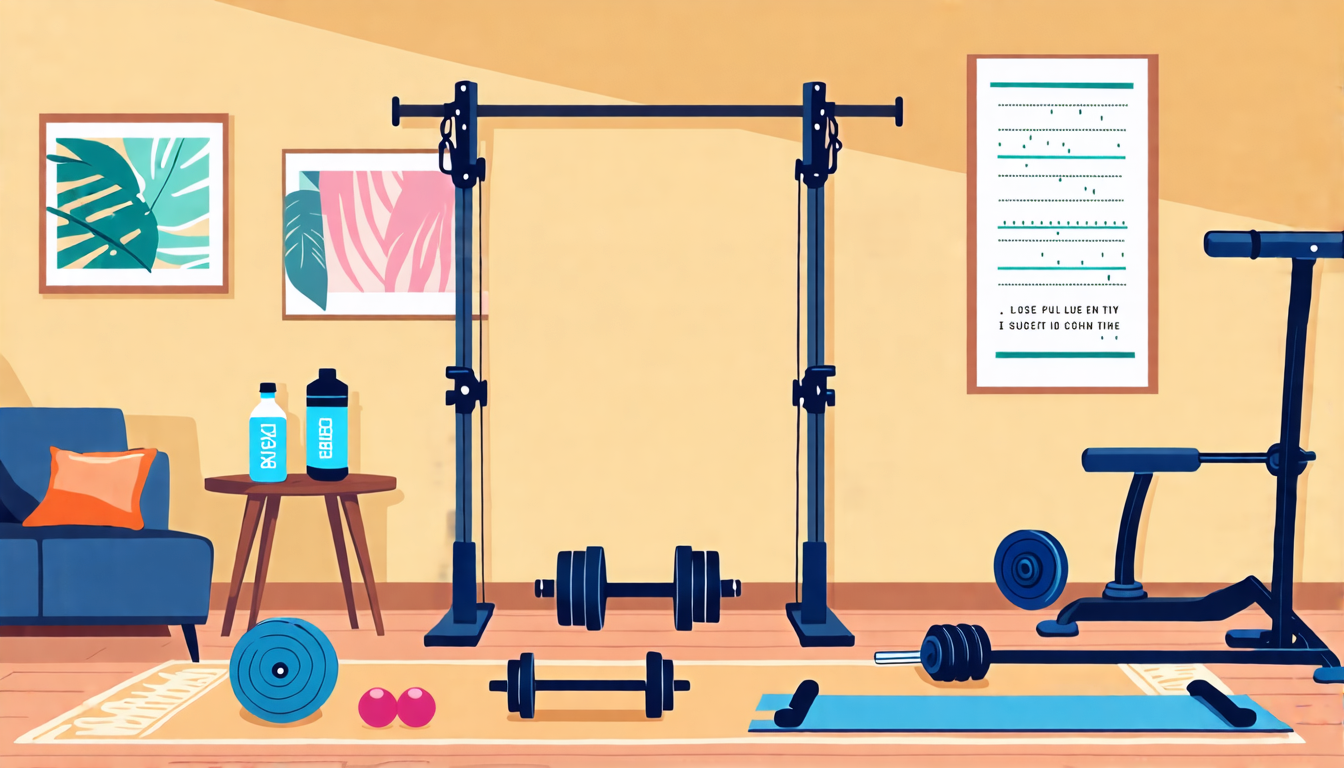Home fitness bars have surged in popularity as more individuals opt for the convenience and privacy of exercising at home. However, like any piece of exercise equipment, they are not without their issues. Understanding the common problems associated with home fitness bars is crucial for maximizing both performance and safety. Improper installation can lead to severe injury, as a poorly mounted bar may become unstable, causing accidents during use. Over time, wear and tear can reduce the effectiveness of the fitness bar, potentially leading to equipment failure. This not only poses a risk to physical safety but can also shorten the lifespan of the equipment, proving costly in the long run.
To address these issues, it is essential to implement effective solutions and preventative measures. Ensuring that your home fitness bar is installed correctly, regularly inspected, and maintained with care can significantly enhance user safety. Selecting high-quality materials designed to withstand repeated use also plays a pivotal role in minimizing wear and tear. By giving attention to these areas, you can maintain the integrity of the fitness bar, optimize your workouts, and ensure your investment lasts for years to come. This attention to detail not only elevates your exercise regimen but guarantees that your home fitness setup remains a safe and effective environment for achieving your fitness goals.
Identifying Common Problems with Home Fitness Bars
A home fitness bar is an essential piece of equipment for those seeking the convenience and versatility of a home workout regimen. However, like any fitness equipment, home fitness bars can present several common issues that users should be aware of to ensure both their safety and the longevity of the equipment. By understanding these problems – such as improper installation, equipment instability, and inevitable wear and tear – users can take proactive measures to address them.
One of the most prevalent issues faced by home fitness enthusiasts is improper installation of their fitness bars. Whether it’s a pull-up bar or a multifunctional fitness station, ensuring that the equipment is correctly installed is crucial. Improper installation may not only hinder the effectiveness of workouts but can also result in dangerous situations, where the bar might become dislodged or fall during use. This risk is particularly high when bars are mounted on door frames or walls without the proper tools or instructions being followed.
Equipment instability is another frequently encountered issue with home fitness bars. This instability can stem from a variety of factors, including uneven or weak mounting surfaces, loose fastenings, or the type of bar used not being suitable for the intended exercises. An unstable fitness bar can cause improper form and increase the likelihood of injury. It can also lead to damage to the surrounding structure, whether that be door frames or walls, which might necessitate expensive repairs.
Over time, even the sturdiest home fitness bars are subject to wear and tear. This issue is exacerbated by frequent use and can manifest in several ways, such as the degradation of grip material, corrosion of metal components, and the loosening of structural parts. Wear and tear can diminish the functionality of the equipment and, importantly, compromise its safety with continued use. For instance, a compromised grip can result in slipping during exercises, increasing the risk of accidents.
The impact of these common problems associated with home fitness bars shouldn’t be underestimated. They directly influence user safety, as the failure of any component during workouts can lead to serious injurious outcomes. This makes awareness crucial; recognizing the signs of these problems early on can prevent accidents and maintain the efficacy of fitness regimens.
Moreover, these issues affect the longevity of the equipment. Regular maintenance and timely interventions can significantly extend the life of a home fitness bar, ensuring it remains a valuable asset within any home gym environment. By addressing improper installation, ensuring stability, and mitigating wear and tear, users not only safeguard their investment but also enhance their overall workout experience.
The importance of regular maintenance cannot be stressed enough when it comes to managing common issues with home fitness bars. Maintenance involves routine inspections for signs of wear, ensuring all bolts and fasteners remain tight, and replacing or repairing any components that have exceeded their lifespan. Such measures not only help preserve the integrity of the equipment but also protect the user’s health and safety.
In conclusion, understanding the common problems associated with home fitness bars is essential for maximizing their benefits while minimizing the risks. Users must approach their setup and maintenance processes with diligence to not only enjoy improved workout outcomes but also ensure the equipment remains a reliable and safe part of their fitness journey.

Maintaining the integrity and functionality of home fitness bars is essential for achieving an effective and safe workout environment. Addressing common issues proactively not only enhances workout efficiency but also extends the life of your equipment, ensuring you maximize your investment. Here’s how you can effectively manage and prevent issues commonly associated with home fitness bars.
Ensuring Proper Setup
Proper setup is crucial in preventing many common problems with home fitness bars. The key is to follow the manufacturer’s instructions carefully during installation. Make sure to:
- Select a Suitable Location: The site where you plan to install your fitness bar should have sufficient space around it to allow for safe and full movement. Also, ensure that it’s away from any fragile objects or furniture.
- Use the Right Tools: Gather all the necessary tools and hardware before beginning the installation. This might include a measuring tape, hammer drill, level, and the appropriate screws or bolts that come with the bar.
- Follow Instructions Meticulously: While it might be tempting to speed through the process, following each step as outlined in the manual will ensure that the bar is securely fixed. Consider watching installation videos if provided by the manufacturer or available online for extra guidance.
Performing Routine Checks
Once your home fitness bar is installed, regular inspections are vital to maintaining its safety and functionality. Here’s how to conduct efficient routine checks:
- Inspect Fastenings Regularly: Check screws, bolts, or any fastening mechanisms for signs of loosening due to vibration or regular use. Tighten them as needed to prevent instability.
- Examine for Wear and Tear: Look for signs of wear on the grips, the bar itself, and any joint or pivot points. Address any significant damage as soon as it is noticed to avoid accidents.
- Lubricate Moving Parts: If your fitness bar includes moving parts or attachments, periodic lubrication can prevent rust and maintain smooth operation.
Selecting Quality Materials
The materials used in your home fitness bar can significantly affect its durability and the quality of your workout. When purchasing or replacing a fitness bar, consider:
- Material Composition: Choose bars made from high-grade steel or another robust metal to withstand regular usage and heavy weights.
- Grip Quality: Opt for bars with high-quality grip materials that provide comfort while reducing slippage, especially important for intense workouts.
- Coating and Finish: A powder-coated or rust-resistant finish can significantly prolong the lifespan of the bar, especially in environments prone to moisture.
Emphasizing Maintenance for Longevity
Ongoing maintenance of your home fitness bar extends beyond routine checks and can greatly improve its life expectancy. Here’s why maintenance matters and how to maintain consistency:
- Establish a Maintenance Schedule: Create a regular schedule that includes all maintenance checks noted above. A monthly review can help prevent long-term issues and help track the bar’s condition over time.
- Log Wear and Repairs: Keeping detailed records of any repairs, replacements, or adjustments can help you observe patterns and refine your maintenance efforts.
- Educate Yourself on Upgrades: Stay informed about potential upgrades or improvements available for your specific fitness bar model. Upgrades may enhance safety features, durability, or versatility.
Benefits of Maintaining Home Fitness Bars
Proper maintenance of home fitness bars leads to a range of benefits that can influence the quality of your workouts and the bar’s longevity. These include:
- Improved Workout Efficiency: A well-maintained bar provides a stable, reliable platform for your exercises, allowing you to focus on performance and technique.
- Enhanced Safety: Regular maintenance reduces the risk of equipment failure, which is crucial in preventing workout injuries.
- Cost-Effectiveness: By prolonging the life of your fitness bar through proper care, you save money in the long run by delaying or avoiding the need for replacements.
- Versatility and Enjoyment: Keeping your equipment in optimal condition ensures that you can safely try a variety of workouts, leading to a more enjoyable and varied fitness routine.
In summary, addressing common issues and implementing preventative measures for your home fitness bar not only enhances its usability and safety but also contributes to more productive workout sessions. By focusing on proper setup, regular checks, quality materials, and dedicated maintenance routines, you ensure a lasting, efficient addition to your home gym setup.
In conclusion, home fitness bars can be an excellent addition to any personal workout space, offering convenience and the flexibility to exercise at home. However, like any fitness equipment, they come with their own set of common issues that can impact both safety and effectiveness. Improper installation, equipment instability, and regular wear and tear are frequent problems that, if not addressed, can decrease the longevity of the equipment and pose safety risks to users. These issues emphasize the critical need for regular maintenance and vigilance.
Implementing solutions and preventative measures can significantly reduce these risks. Ensuring correct setup from the start, conducting routine inspections, and opting for high-quality materials are all proactive steps that one can take to maintain the integrity of the home fitness bar. By doing so, not only is the safety of the user enhanced, but workout efficiency is improved as well, providing more reliable support during exercises. Moreover, these practices help prolong the life of the equipment, ensuring sustained performance over time.
Thus, addressing the common issues associated with home fitness bars is of paramount importance for anyone looking to maintain a consistent and safe workout routine at home. By being informed and proactive, users can enjoy the full benefits of their home fitness bar, making it a valuable part of their home gym setup for years to come.

